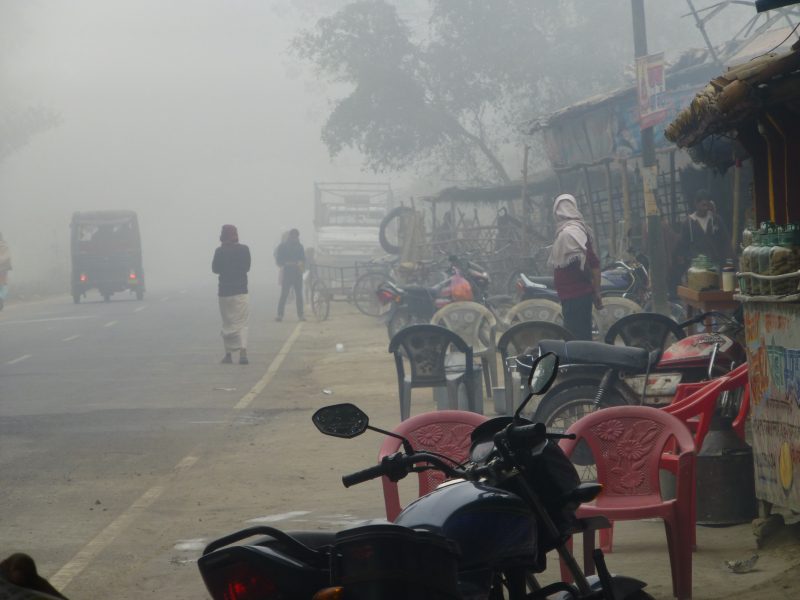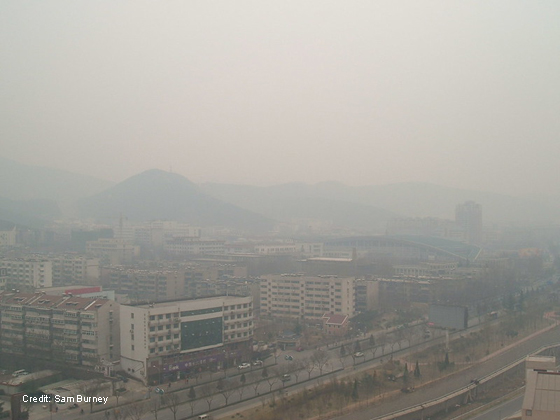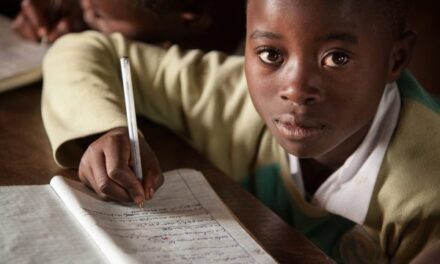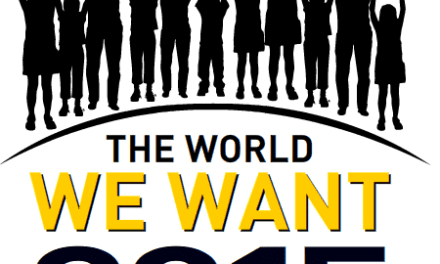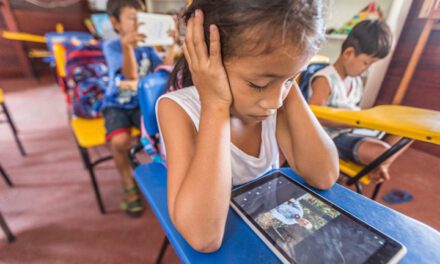This blog was written by Keith M Lewin, Emeritus Professor of International Education and Development, University of Sussex.
Advocacy from the UN system for action on climate change is clear and purposeful. It has stressed the need for – “Governments (to) intensify national and international efforts to arrest the deterioration of the human environment and to take measures towards its improvement, and to promote activities that will help to maintain the ecological balance on which human survival depends” (UN Development Decade General Assembly, Resolution 2626 (XXV)). Preserving the global environment is more important than ever now that the Anthropocene is upon us. Human activities are putting the future of life on Earth at risk as is clear in the findings of the Synthesis Report of the Sixth Assessment of the Intergovernmental Panel on Climate Change. These provide a sobering reminder of the many actions needed to change our behaviour, mediate consumption and investment preferences and generate wellbeing that is more fairly distributed.
This blog argues that Sustainable Development Goal 4 (SDG4) largely omits indicators that reflect sustainable development. If the targets do not change to reflect the realities of climate change and the need to mitigate it, and if the indicators are not revised to capture sustainability, then a great opportunity will be lost for another development decade. It is time to join up the dots for a more coherent framework of SDGs.
Global goals do serve a purpose if they accelerate progress towards desired outcomes. The challenge is to identify and encourage pathways to sustainable educational development (SED) that are clean and green and do not simultaneously create unwelcome collateral damage to planet Earth. This blog is a sequel to an earlier UKFIET blog, that argued that targets and indicators for education were needed that went beyond lists of desirable outcomes defined by cross sectional data, and which captured concerns for sustainability. That challenge remains.
In 2015, SDG4 was endorsed by the international community at the World Education Forum (WEF) in Incheon. It reiterated existing commitments to inclusive and quality education for all and the promotion of lifelong learning. SDG4 identified seven targets and three facilitating actions that it argued were essential, especially for those UN member states with low and low-middle incomes. The latest UNESCO GEM indicator list now has over 60 specific education indicators for SDG4 if the indicators are counted by distinct data points (e.g. counting primary and lower secondary completion rates as two indicators). This is becoming of limited use in policy dialogue.
Curiously, sustainability is mentioned only six times in this text. All the mentions are in the elaboration of Target 4.7 which exhorts countries to include knowledge and skills needed to promote sustainable development and global citizenship in curricula. This is not a measure of sustainability but an invitation to change curriculum content to include discussion of sustainability. Most of the 60+ indicators are based on cross sectional data designed to assess performance at a point in time on a pathway to 2030. They do not assess whether any particular level of performance is sustainable up to and beyond 2030. Nor can they easily determine the direction of travel of development.
The WEF at Incheon was designed to shift the global gaze from the Millennium Development Goals and their limited view of educational investment to a more nuanced emphasis on i) Education for Sustainable Development (ESD) – the content and process of curricula that determines if education systems are fit for purpose in the Anthropocene; and ii) Sustainable Educational Development (SED) – the mechanisms that are needed to ensure all have access to educational services of quality that are affordable and available equitably. The ambition was to generate a new architecture of global goals embedded in sustainable development. The global education community has ended up with far less. Environmental sustainability gets a passing nod through the reform of curriculum content to reflect the ambitions of SDG4.7. The other targets and indicators do not address questions of sustainability either in terms of ESD or SED.
ESD indicators could have included those that might capture sustainability in relation to curricula, pedagogic practices, high stakes assessment and formative assessment systems that validate knowledge and skill and manage learning, teacher education and continuing professional development methods, and technical and vocational education (TVET) that respond to the challenges of the coming industrial revolution 4 and rapidly changing labour markets. However, the UN Climate Change Conference COP26 in November 2021 is not the best forum to deliberate the changes needed to promote ESD. This requires a focussed discussion by a critical mass of those with deep knowledge of learning, cognition, curriculum, pedagogy, assessment and educational system development, as well as environmental issues.
In contrast, COP26 must take a constructive interest in the issues that surround SED. The silence from agencies and advocates on whether the SDG4 targets are sustainable is deafening. SED is concerned with whether what is proposed is environmentally, financially and socially sustainable. Criteria include whether goals are achievable, proven methods of service delivery exist, levels of inequality are reduced, class and school size are appropriate, achievement levels can be increased and indicate meaningful learning, calls on expenditure from low-income households are affordable, and the levels of public expenditure can be supported from imaginable revenue streams. COP26 should helpfully turn its attention to these issues not least because education systems are responsible for large parts of public expenditure, and because they are the primary vehicle through which states can shape the future behaviour of citizens to make rational choices that are planet-friendly. Education systems are a rapidly growing source of emissions and energy consumption.
There are four areas where COP26 can initiate and/or contribute to discussions on SED in relation to global goals, targets and indicators:
- SDG4 anticipates that all children and young adults will experience early childhood care, pre-school and 12 years of quality education. Currently, about 260 million children are not enrolled (pre-covid-19) with 58% in low- and middle-income countries (LMICs) and 26% in low-income countries (LICs). If all these children were to attend school, the total numbers enrolled would increase by about 25%. In addition, if pre-school was universalised, the numbers would increase by a further 5% to 10% depending on the arrangements made. So all things being equal emissions related to school systems may increase pro rata by as much as 35% and much more than this in the lowest enrolment countries. Population growth at as much as 3.5% per annum would be additional to this. Since LMICs (excluding India) only contribute about 5% of carbon emissions, and LICs less than 1%, this will have a significant but not large impact on global climate. It will however have a much bigger effect on national and local environmental issues, including increased energy usage, construction activity, infrastructure issues, stress on utilities, depletion of water supplies, and greater demand for internet connectivity. However, if LICs become like LMICs as development takes place, emissions per capita, including those from education systems, will increase fourfold. This means that it is the highest priority to ensure that increased access and enhanced educational quality does not come at the expense of the environment and the impaired well-being of citizens.
- SDG4 anticipates expansion in higher education and in post-school TVET. Growth in higher education enrolments in many LICs and LMICs have been high, in some cases doubling every decade. Depending on how higher education is planned and delivered, its emissions per student may be much greater than for school children. World class physical facilities can be very expensive and energy intensive, relative to local cost structures in LICs and LMICs. Cost per student and non-salary costs may be many times those at school level, suggesting higher consumption. Study abroad can greatly increase the environmental impact of higher education programmes. One long haul flight can emit a ton of atmospheric carbon in half a day which is likely to be more than the average annual emissions of an ordinary LMIC citizen. SDG4 has targets and indicators for international study. Target 4b seeks to substantially increase the number of scholarships for study abroad in higher education and TVET. None of its indicators reference the planetary burden this would generate.
- In many LICs and LMICs, shadow systems of education have proliferated alongside public schools. Large-scale tuition industries have developed, trading on problems of quality in public schools systems suffering from resource shortages and poor management of learning. The driving motives are linked to high stakes selection examinations for scholarships, access to high-performing secondary schools and universities, and qualifications with a high labour market value. Private expenditure on tuition can exceed the cost of school places. Increasingly, tuition industries raise the cost – financial and ecological – of selecting students without necessarily changing who gets selected. The message they send is that learning is primarily to get a job or university place, rather than acquire knowledge and skill relevant to social and economic development that is sustainable. The consequence is rapidly increasing volumes of traffic around tutoring, movement of students over longer distances to seek the best tutors, and increased energy consumption by students and largely unregulated service providers.
-
School systems in LICs and LMICs have generally not be planned with energy efficiency in mind. Nor have many donor-supported educational innovations. Systems differ but the politics of school location, demography and economic development have been definitive in lacking environmental impact assessments. There are several ways in which school planning and mapping can help:
- It can reduce travel distances to school and encourage efficient transport arrangements – walking, cycling, school buses etc.
- It can seek to reduce real and perceived differences in performance between schools motivate parents to transport children to more distant schools of higher quality.
- School campuses should be designed as energy efficient with net zero as the default criteria. Solar cell generation, gravity fed water supplies, bio-gas fuel sources, etc. should be designed in from the start or retrofitted where possible. Energy costs are often greater than expenditure on learning materials (including computers) in high-income countries and may be a large share of non-salary costs in LICs.
- As internet use grows connectivity has to be provided at sustainable levels of cost and emissions and its energy consumption managed.
What can COP26 do in the light of these challenges? Seven things seem necessary.
- Review SDG4 targets using a COP26 lens to audit level of ambition, time scale and service delivery with assessments of environmental impact.
- Develop SDG4 indicators of SED to audit, assess and promote environmentally-friendly growth.
- Identify net zero and ecologically-appropriate building standards, infrastructure investment and operating procedures for educational institutions with public reporting.
- Develop methods to stress test SDG4 plans that can be financed sustainably from domestic revenue and prudent external assistance.
- Manage the environmental impact of progression towards universal enrolment from pre-school to Grade 12 by phasing growth to be sustainable and ecologically friendly and mediate the growth of shadow systems driven by high stakes selection systems.
- Review expansion of higher education and TVET and establish its eco footprint related to travel, teaching and student accommodation and explore options e.g. mixed mode, blended face-to-face teaching, virtual delivery and focussed international scholarships.
- Join the dots that link plans for SED to environmental mitigation and adaptation so that SDG4 is consistent with the ambitions of COP26.
This blog started with a citation from the UN. The surprise is that Resolution 2626 (XXV) was agreed not for COP26 but on 24th October 1970! The ambition is old, the urgency to act more pressing than ever. Let us hope that delegates at COP26 heed the pleas from David Attenborough, Gretha Thunberg and Prince William to get beyond the hyperbole and undertake actions that make a difference. Developing new indicators of sustainable development for SDG4 would be a start. In the words of the rock anthem Radio Gaga “You had your time, you had the power. You’ve yet to have your finest hour…”. Just perhaps this time COP26 can rise to the challenge.
Additional material on sustainable development and SDG4 is available at: https://keithlewin.net/downloads/

